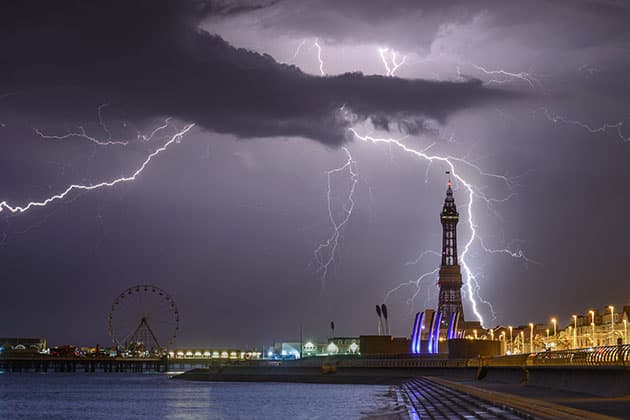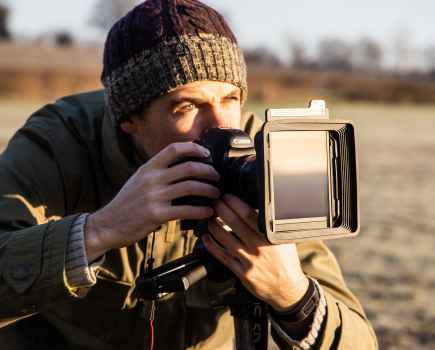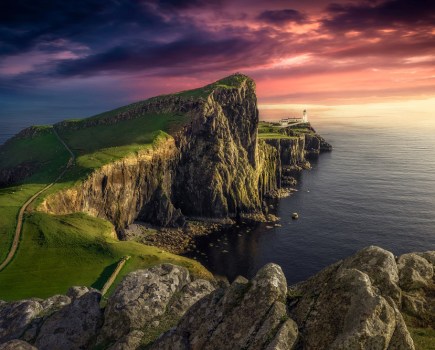Make sure you check out our video interview with Charlie where he talks all things LPOTY.
I had no idea Landscape Photographer of the Year (LPOTY) would be so successful back in 2007, and no idea there were so many talented landscape photographers in UK and all over the world,’ reflects a welcoming and relaxed Charlie Waite when AP interviewed him recently at home – home being a converted mill in rural Dorset. ‘I hoped it would go into year two and three, but didn’t really look much beyond that.’
Given the enduring popularity of landscape photography, it is surprising nobody had conceived of the idea of a competition before, so Charlie is a justifiably proud parent. ‘I think I can claim it was my idea,and we developed it at a time when photographic competitions were really catching on. I approached the AA for sponsorship, who took about five seconds to decide, and the rest is history.’
As Charlie notes, a big part of the early appeal was the chance for photographers to get their work published in a full-colour book. ‘Facebook had just begun but all you get on there are “likes” and brief comments. People wanted to take their images further. Getting them in a book consolidates them and kind of legitimises them.’
Even in its launch year, LPOTY attracted an impressive 20,000 or so entries. ‘The quality from the outset was high, though a few entrants didn’t read the terms and conditions,’ Charlie recalls. ‘Interestingly, the number of entries has remained pretty constant, but the quality has gone up – people have realised it’s about urban and rural landscapes, so we don’t get so many pictures of cats or dogs (though a dog did win it one year…).’
LPOTY is open to amateurs and pros, so anyone can enter from anywhere in the world – the only caveat is that their entries were taken in the UK. ‘It’s interesting to see how photographers from other countries interpret the UK and indeed, one year a French guy won.’
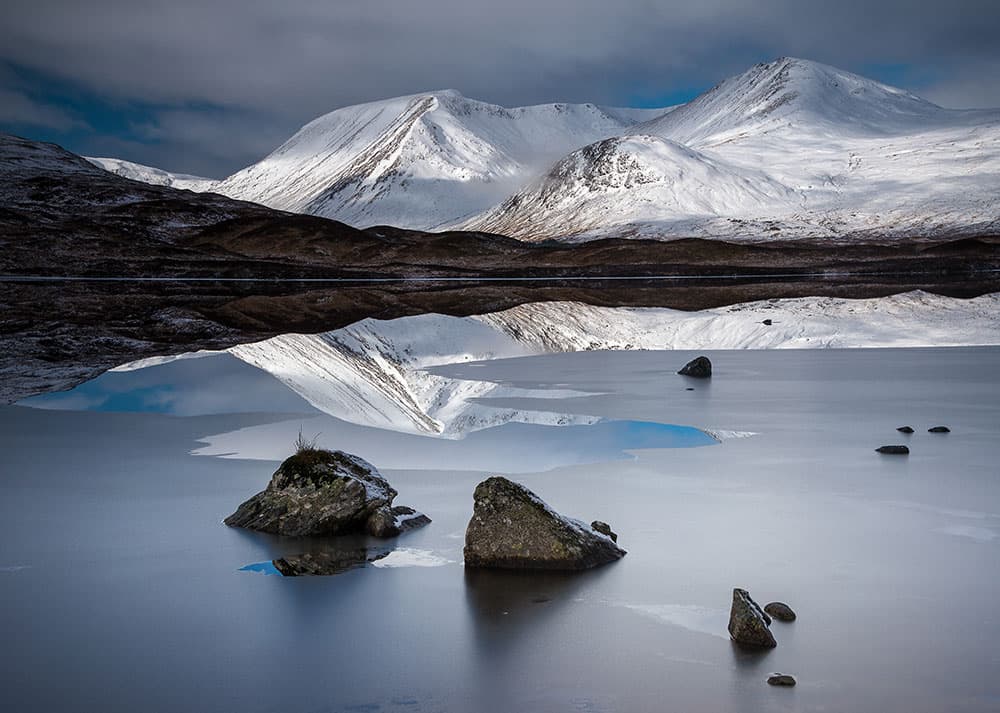
The Black Mount reflecting in partly frozen Lochan na h-Achlaise, Rannoch Moor, Highland, Scotland. Nikon D610, 28-300mm at 55mm, 1/200sec at f/8, ISO 200
Broad church
These days the term ‘landscape photography’ encompasses a wide variety of subjects and approaches, and LPOTY is by necessity a broad church, able to accommodate some very diverse responses to the great outdoors. ‘Our categories embrace all the ways people like to interpret the landscapes, urban or rural, but traditional Classic View category will always have huge appeal,’ Charlie notes. ‘But we knew the definition of landscape photography was shifting, so there’s room for the more off beat, unconventional approach. Good landscape photography is about being a responder and an interpreter.’
Recently, some more abstract and impressionistic images have won major photography competitions, not without controversy. Charlie has no problem with what he calls a more interpretive and conceptual approach to landscape, so long as it has emotional impact. ‘To shut your mind to new photographic styles and approaches is an insular way of looking at photography. If the entries transport the viewer to a new place in their interpretation, then the creator of that work has produced something really remarkable. When the viewer shudders and their heart skips a beat, the image has worked – whether it’s a conventional approach or a more experimental one. People like Valda Bailey, for example, really move me, but it’s not just about how clever or experimental they’ve been.’
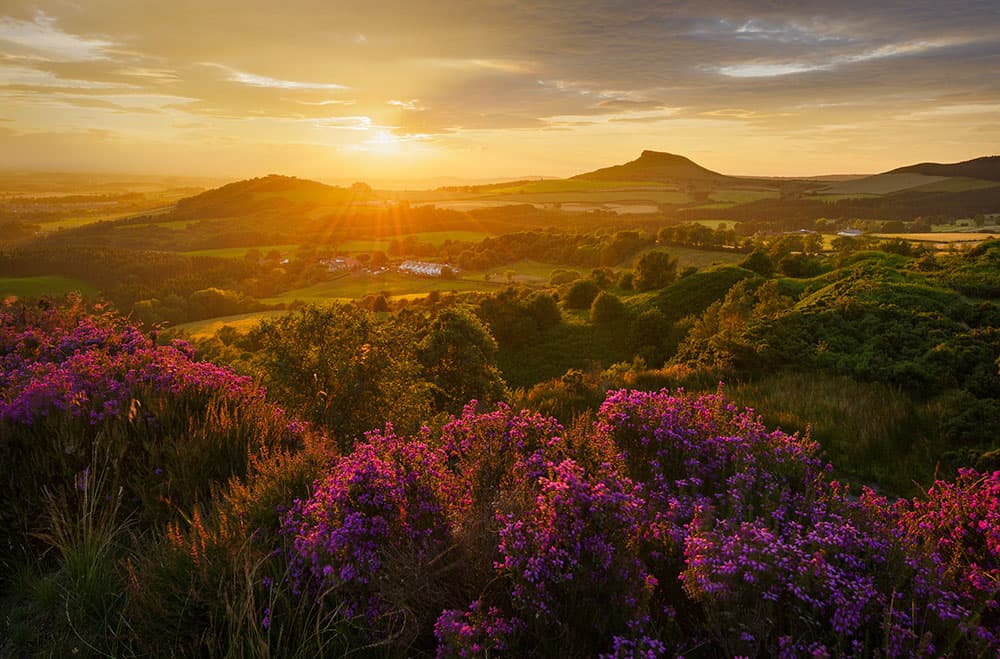
Heather in bloom, Roseberry Topping, North Yorkshire
Commitment and intent
Charlie is also keen to stress that he and the other judges have no objection to Photoshop per se. ‘Photoshop is not a crime, it’s a marvellous bit of kit, and I call it the electronic darkroom. The only time I think it crosses the line is when Photoshop is used so much that the image looks over-engineered, and the viewer’s connection with the image is broken – they become suspicious. Other problems are over-pixelation, allowing artefacts through and very noisy images – that is just sloppy.’
A particular bugbear for Charlie is badly executed HDR. ‘A lot of people use HDR to compensate for shadows descending into deep black nothingness. Once you start that process, however, you are messing with God’s light, interfering with a lighting scenario that happened completely naturally. If you are going to compensate for the dynamic range of your camera’s sensor or film, then make sure it has parity with what the eye would normally see. In other words, don’t put too much light into a scene where there would normally be shadow at a certain time, or your viewer will end up asking where the light is coming from!’
A perceived lack of sharpness, however, isn’t necessarily a reason to reject an entry. ‘If the image has something technically wrong with it, but has a huge emotional tug, it doesn’t matter if it’s unsharp, as it’s worked – and the photographer generally will know it isn’t sharp. It’s like intentionally grainy film. I did a book on a Venice a few years ago, and used grainy film as I felt it was more suited to such an old city. The images that don’t get through the early rounds of LPOTY are the ones which have collapsed – not in terms of aesthetics, but in terms of bad processing.’
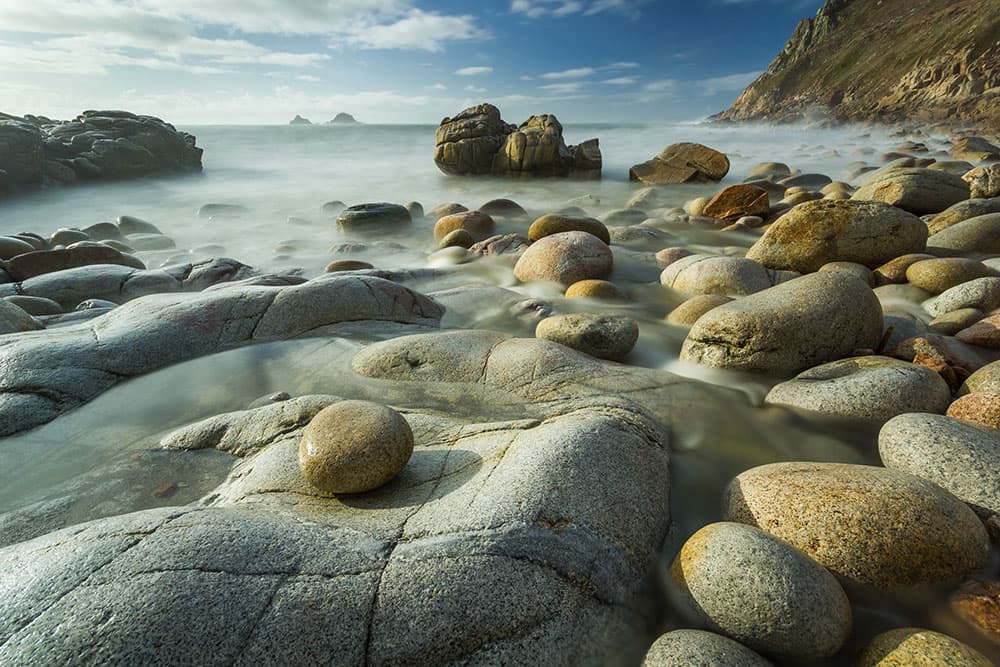
Porth Nanven beach, near Land’s End, Cornwall. Canon EOS 550D, 10-20mm at 20mm, 20sec at f/11, ISO 100
Panel takes some beating
When it comes to the judging panel, Charlie tries to make it as democratic and inclusive as possible. The panel includes pundits as diverse as broadcaster Nicholas Crane of Coast fame; The Sunday Times Magazine picture editor Russ O’Connell; AP’s very own Nigel Atherton; and VisitBritain’s Jasmine Teer. ‘The question entrants tend to ask is, “Is the panel qualified to judge my work?” and they definitely are,’ Charlie asserts. ‘The panel are not all landscape photographers, however. I think that would be too rarified and it wouldn’t work. You need somebody from the street, too. I want to make the whole of the UK say, “Isn’t that winner lovely”, not just other landscape photographers.’
Charlie is proud that the judging panel scrutinises all the images properly, at full size on carefully calibrated monitors, rather than squinting at lots of thumbnails or low-res JPEGs. So what kind of images tend to catch the panel’s eye and therefore get through the judging rounds?
‘Images that create an emotional connection. If you are not wholeheartedly confident in the image you are about to make, your lack of confidence will be conveyed to the viewer, who will recognise what you are trying to say, but conclude you could have done it better. So my advice to all photographers is to commit 100% to the image. It’s not just a photograph you are taking, it’s a massive production, and you need to engage with all the elements. I’m happy to admit I once had pictures rejected by a client as they were slack and second rate. I didn’t commit and I didn’t wait for better light.’
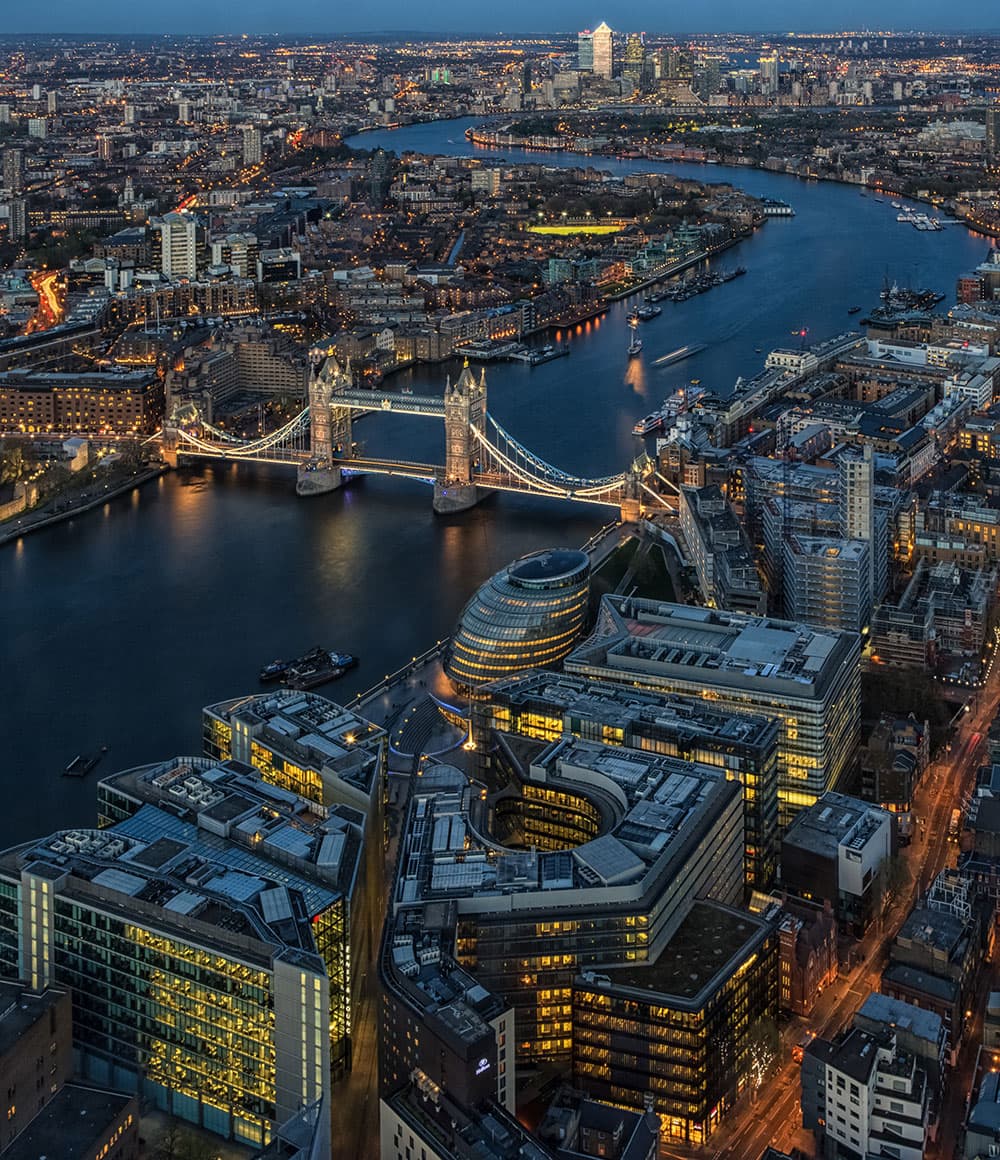
The Serpent of London, England. Canon EOS 5D Mark III, 24-70mm at 32mm, 8secs at f/18, ISO 100
People, places and things
Charlie goes on to stress that potential entrants shouldn’t be put off if they have photographed a very familiar place – the Scottish highlands or Durdle Door, for instance. ‘Our judges won’t dismiss an image just because it shows a clichéd scene. On the day the photographer took the picture, it might not have been a cliché if they had never been there before. But with very familiar places, it’s good to go online and look at other interpretations and what’s been done before. So with Durdle Door, for instance, get there 10 minutes earlier or stay 10 minutes later. Try to make your images as good or better than the competition.’
Potential entrants shouldn’t assume that they can only submit landscape images devoid of people, either. ‘There are categories for images with people, either Living the View or Your View,’ Charlie explains. ‘If they are the right people, then the photographer will know that, but if they just strayed into the scene, it means there is an element of the image that the photographer has not exerted any control over. The worst thing is when a photographer doesn’t notice that a person or stray element has crept into their picture.’
Charlie returns to this concept of a successful landscape image being a grand production. ‘It’s like a movie. An edited movie wouldn’t be delivered with a boom mic suddenly appearing in a scene. When the image is printed at a large size, then all the component parts – and all the errors – are going to be very evident. All the elements which make the final image have to be decided upon, and not just there by accident.’
So what are Charlie’s hopes and plans for LPOTY? ‘We’d like to tour the exhibition more, to take it to continental Europe to show off the UK’s landscape, and to encourage more entries from overseas. We’re also keen to get more entries from young people, which is already happening. Generally, I want to get more people to engage with the landscape, because it’s a really really good thing to do. We are so dislocated from our landscape and the natural world at the moment, so being out there in it is like a therapy. When I haven’t photographed for six weeks, I feel worried and nervous… I must rekindle my relationship with the landscape and afterwards I feel enriched, even if I haven’t got a photograph. I have touched something that is so real. Landscape photography is not just about making a photograph, it makes you think about who you are and your purpose in life.’
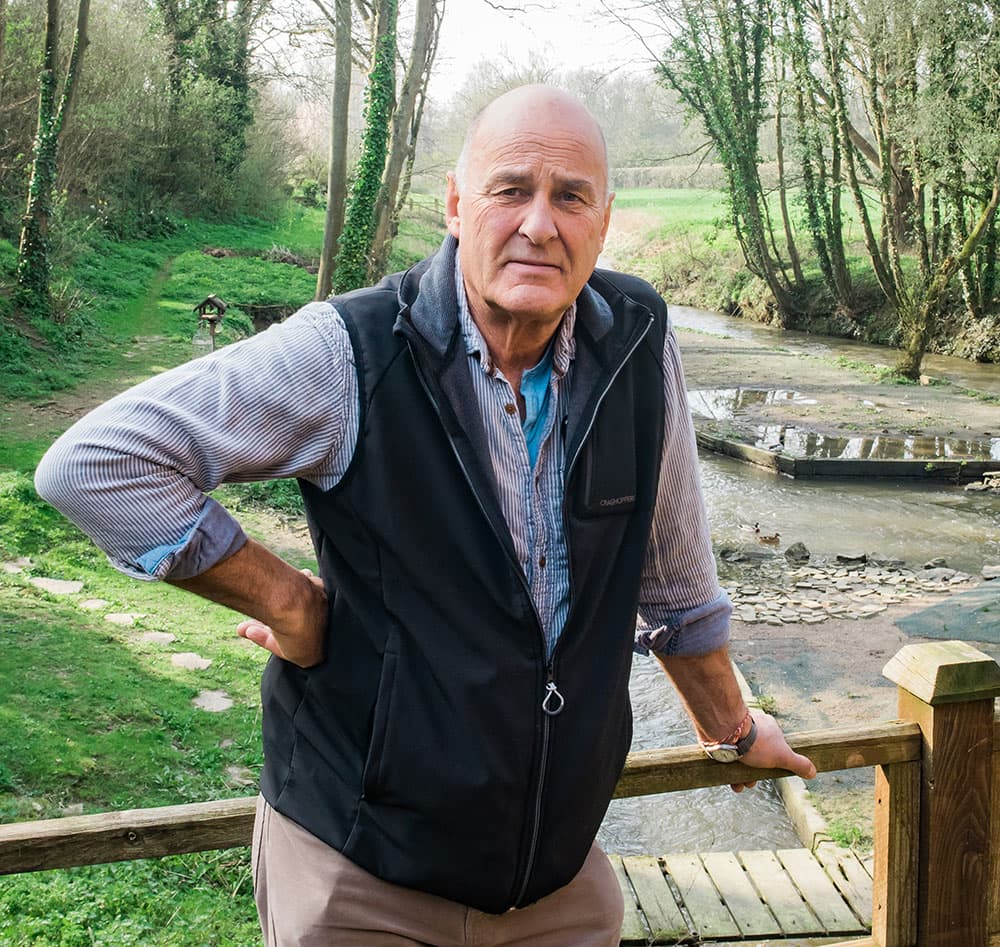
Charlie Waite at home, March 2017
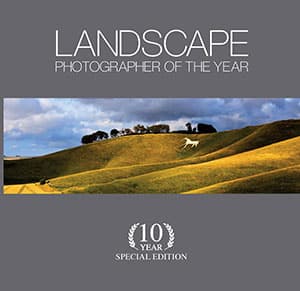
Full details of entering this year’s LPOTY, along with details of how to obtain the book celebrating the 2016 competition, can be found at www.take-a-view.co.uk

